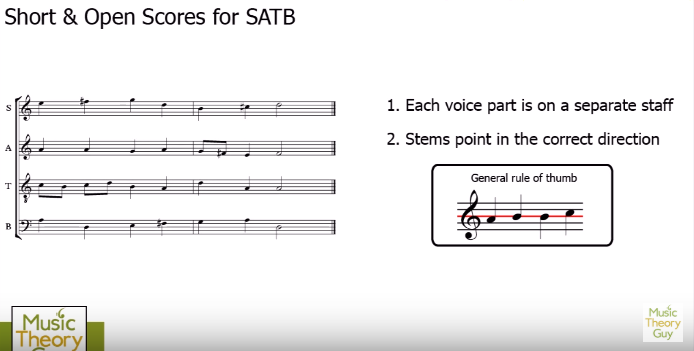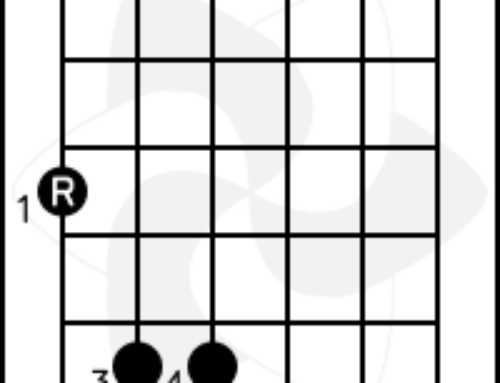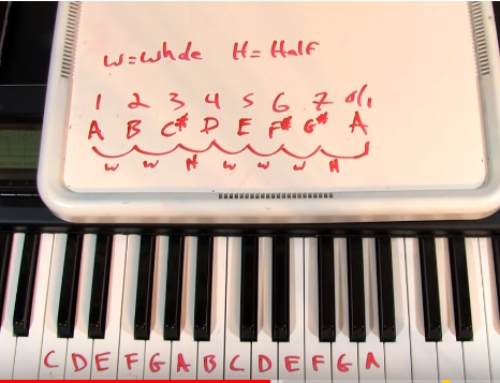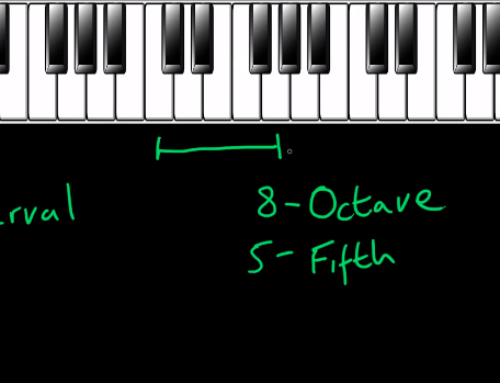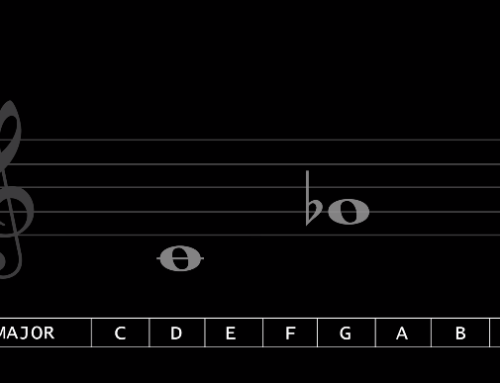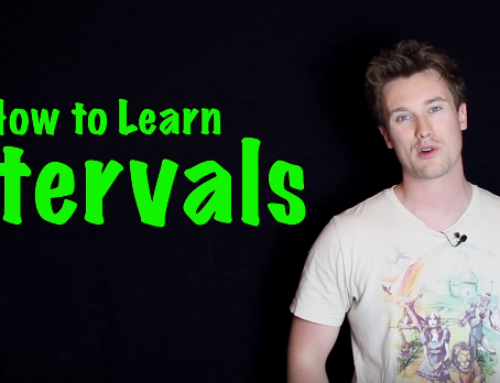Clinic Short Open Scores for SATB
Video text transcript below may be slightly inaccurate due to software
Short & Open Scores for SATB. Discusses the difference between short and open scores for SATB (Soprano, Alto, Tenor & Bass).
0:04
Hello and welcome to the music theory guy clinic with me music theory guy. If you’ve got a question about music theory, this is the place to get it answered. If you’d like to get in touch, you can send me an email. We can contact me via Facebook or Twitter. That’s precisely what youtuber Steve Walton and Donnie from Malaysia have done vagrants me and they want to know about s ATV, soprano, alto, tenor
0:27
and
0:28
base and in this video I’m going to be talking about
0:31
short and open scores s ATV. Let’s have a look. Okay so before we start talking about short and open scores in detail, let’s just be absolutely certain we understand what s at be represents. So the S means soprano a is alto T is tenor and B is based there. The four most common types of voices, the soprano is the highest and the base is the lowest soprano and alto are female. Whereas the tenor and bass are sung by males. Now they’re just rough guide to where people the ranges that people thing. So for example, for me, I can sing fairly high I can get to sort of alto range but I can’t quite get as low as the lowest bass notes. So I’ve got a range somewhere as shown on screen. You also need to be aware that young boys boys whose voices haven’t broken they actually seem very high we don’t call them soprano, we actually call them trebles. So there’s lots of different ways to describe different voices. You may have heard of a countertenor you may have heard of a mezzo soprano there will find they will exist. But for this video I’m focusing in on sa t be soprano, alto, tenor, and base. Now he’s a music that’s been written for sh t. v. And I’m just going to go through it step by step. So number one, each voice part is on a separate staff or Steve, if you prefer. And what I mean by that is you see down the side it says s at the so the sopranos on the top line. The altos on the next one down the 10 is on the next line. And the base is on the very bottom line. So in other words, if I was singing the bass part, I’d be following the notes on that very bottom line number two, all the stems point in the correct direction. Now, what do I mean by correct direction. And I do have a video about stems if you want to go and look at this and bit more detail. But here’s a general rule of thumb, I’m looking at the treble clef stave and I’ve highlighted the middle line read and over note is attached to that line, the stem can point upwards or downwards. But if a note sits below that red line, the stem point upwards prefer note sits above that line, the stem points downwards. So let’s take a close look at the 10 align what I mean by this. So the first note is a see which I’ve highlighted yellow and because that’s above the middle line, the stem is pointing downwards, the next notes be that’s on the middle line. So I could actually pointed the stem up or down I’ve gone for down so it matches the downward motion of the sea before it there’s the see again, with the stem pointing downwards. The next note is a D, that’s well above. Now the middle lines that stem is pointing downwards be again, that’s sitting on the middle line. So I’ve made the standpoint down with the A that’s below that middle line. So the stem is pointing upwards. Now, it could keep going on for the rest of the tenor party. But hopefully, you get the idea that the stems are pointing in the correct direction dependent on where they’re placed on the stave itself, have a look at my video on stems, as I say, if you do need a little bit more help with the direction of stems number three, the 10 apart is written an octave higher than it is actually sung that take a close look at the treble clef at the very start of that 10 align underneath it your spot that was a little number eight number eight means sing an octave or eight notes lower. So have a look at this, we’ve got the first two notes that are written in C and B, what that means is, is actually sing it an octave lower, still noticing a be an octave lower. Now, the reason we do this is to avoid the use of ledger lines, that seeing the be the first two notes of the 10 apart. If it was written out as it’s something you can see that both of those notes have ledger lines. Now, to avoid the use of ledger lines, it’s just easier to write everything an octave higher, so the 10 apart and only the tenor part is written an octave higher than it is actually Sung. It’s worth pointing out that rather than writing a treble clef with a little eight underneath it, although that’s common place these days, if you’re using an old edition of music, you might come across two treble clef sitting next to each other, that means seeing an octave lower, or you might even find a treble clef with two little lines sticking out of it. That means an octave lower as well. But generally today, nowadays, you’ll come across that treble clef with the little eight underneath it. And finally, number four beats are vertically aligned. Now what I mean by this is there needs to be an imaginary line that cuts straight through all four lines which represents beat number 123 and four and all the subdivisions of those beats. So his beat one you can see it’s a very nice straight line is beat to beat three and before in the 10 apart. There’s a quaver that’s on beat one and a half so there’s a nice line that cuts through there and you can also see that there’s another quaver on beat two and a half so we’re going to nice straight line. Okay, let’s shake things up a little bit. I’m just going to move the notes around a little bit, just to prove my point here. So he’s the one that imaginary line is nice and straight, I need to know right, an imaginary line for beat one and a half. You remember that the 10 apart the quaver that should have been all on its own, and it should be a nice straight line, but because I’ve written the second beat of the bass part that the which I’ve highlighted because that’s right underneath beat one and a half, I can’t draw that line straight anymore, there’s a slight kink in it, I’ve got to go to the left of that second beat of the bass part. If we look at beat to it starts off straight, so it cuts straight through the F sharp with the soprano part. But then it has to move to the left to go to the age of the Alto, then it goes to the right sets to the the quaver see of the tenor, and then finally back it goes at kink to the left for that d of the bass part. And if we carried on looking at all the other beats and subdivisions of the beach, you can see that it gets quite complex, it is absolutely essential that you write beats vertically aligned when you’re writing music for SAP TV. There’s a long complicated reason for this. But in a nutshell, it’s just so that it helps the musicians in this case the vocalist be able to understand what all the other musicians are doing, and they’re up to place their notes at exactly the right beetle sub eat and the music now these four rules are absolutely essential. And what we’ve actually just written out of the rules for writing music for SAP be using an open score and I’m just going to pop all of our instructions down to the bottom of the screen. So we’ve got a little bit of space for us to look at short score. So here’s a piece of music in fact is exactly the same piece of music as the open score but this is called short score and I’ll go through the reasons and explanations of why this is short score so number one there’s any to staves or staffs this time you can see that the soprano and alto or on one line and the tenor and base on the other number to the soprano and tenor stems point up where is the alto and base stems point down so let’s just have a look at this here. All the soprano notes which have highlighted read you can see that all their Sams point upwards here are the tenant notes and they’re all yellow. And you can see that all stems are pointing upwards. Where is the green alto notes they’re all pointing downwards and the blue base notes they’re all pointing downwards as well. Now it’s absolutely essential that you follow these rules. But just a couple of things to bear in mind. Here you can see that there is a stem on one black notes pointing upwards and downwards. What that means is, is that if a notice to stems one up and one down, both parts are singing exactly the same pitch. So in this case, the tenor and the base of both singing that note a another thing to bear in mind a lot of people get confused that they think it’s just the highest note on the stage, that’s the soprano part and the lowest part is the altar. Have a look at this example. You’ve got to be with the stem pointing downwards and the A with the stem pointing upwards. In this case, the B which I’ve highlighted yellow because the stem is pointing downwards it’s the note that sung by the altos where is the A, which of highlights blue because the stem is pointing upwards that is going to be sung by the sopranos. So don’t always assume that it’s the note at the very top that sung by the sopranos. It’s the stem direction that tells you which part is singing. Which note number three, the 10 apart is written at pitch in the bass clef. Okay, so let’s just remind ourselves of the tenor part in open score.
9:25
And you remember that
9:26
we use the treble clef with that little eight underneath to represent that the tenor parties written an octave higher than it is actually sung in short score, the tenor is actually singing from the bass clef. In other words, it’s actually going to be sung at the pitch that it’s written. So his the tenor part and I’ve highlighted all the notes read, they are going to be sung exactly at that pitch. If you need any help with understanding the relationship between the treble and the bass clef can have a look at my video called the important of middle see that details that very important relationship between the treble and bass claps. And finally, number four, again, just like the open score beats are vertically aligned. So if we have a look at my short score, you can see those lines as imaginary lines are cutting straight, nice and neatly through each of the beats and subdivisions of the beat. And that’s it. So on the screen of the different sets of instructions, you need to know when you’re reading or writing music essay, TV in the open score or the short score. If you remember these two sets of information, you’ll have no problem reading from or writing for music. That’s sa TV on the short or the open school.
10:45
Okay, well, I hope that’s been useful to you, Steve, and Donnie, and anybody else that’s been watching. Remember if any of you have any questions about music theory, please do send me an email or contact me via Facebook or Twitter. I always look forward to receiving your messages in the meantime. Many things for watching and if you haven’t already done so please do subscribe to my YouTube channel a wants to know about s a TV or soprano,
11:07
alto, tenor and base
11:15
in the meantime, many thanks for watching and if you haven’t already done so. can sue who Sue I have noted you know, Sue No, I don’t know who is who is she?
11:24
I want to say now.


